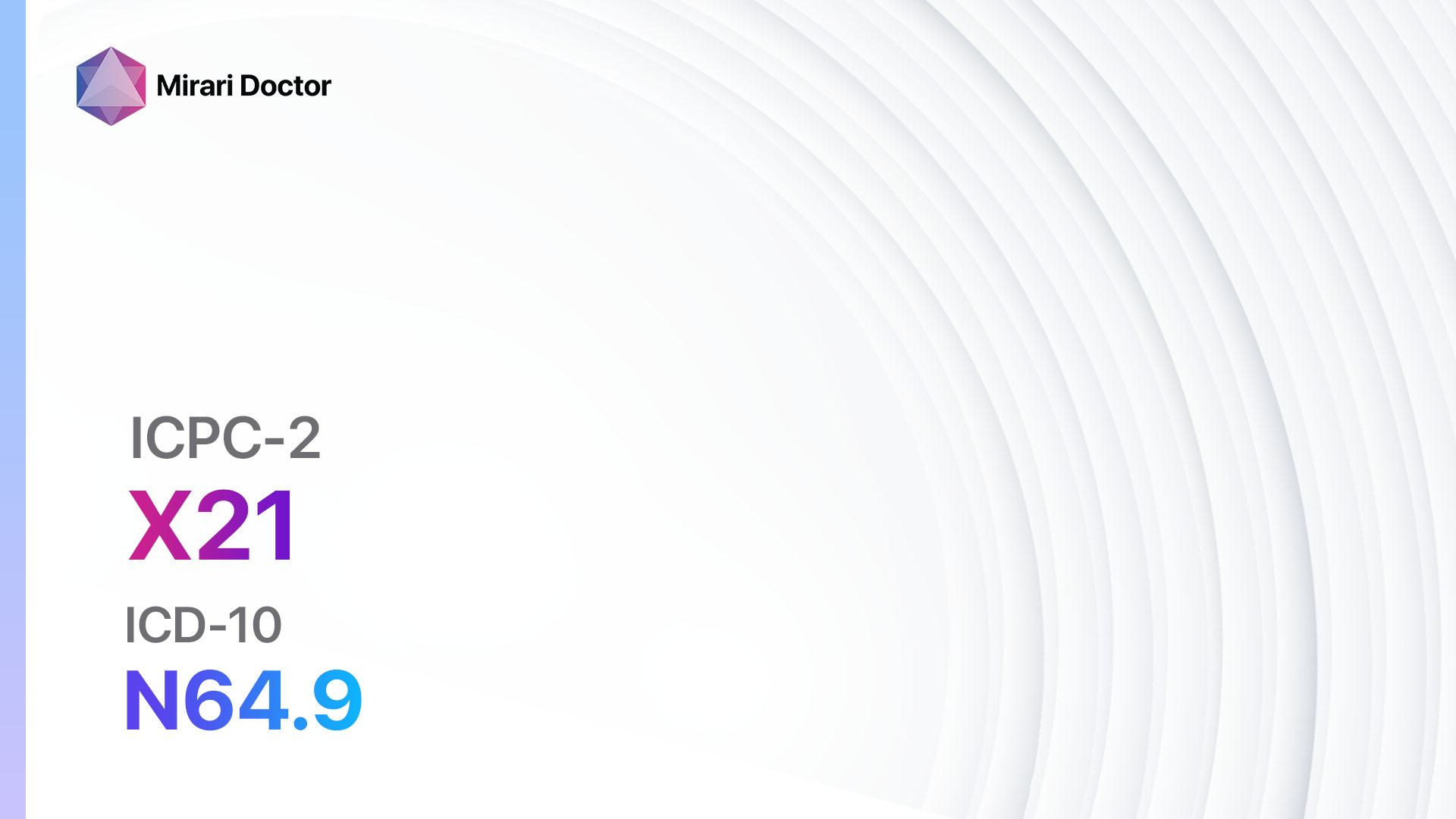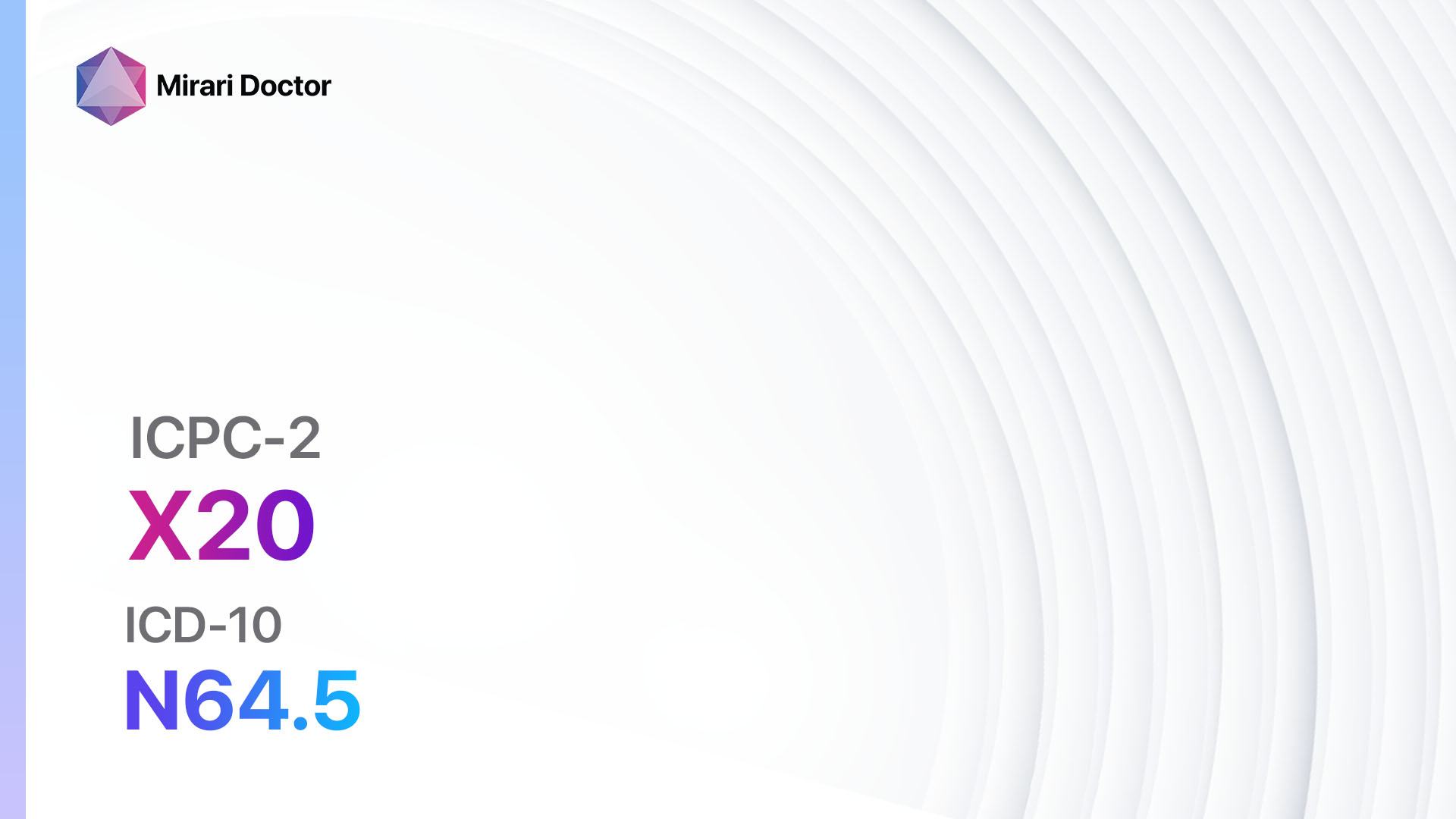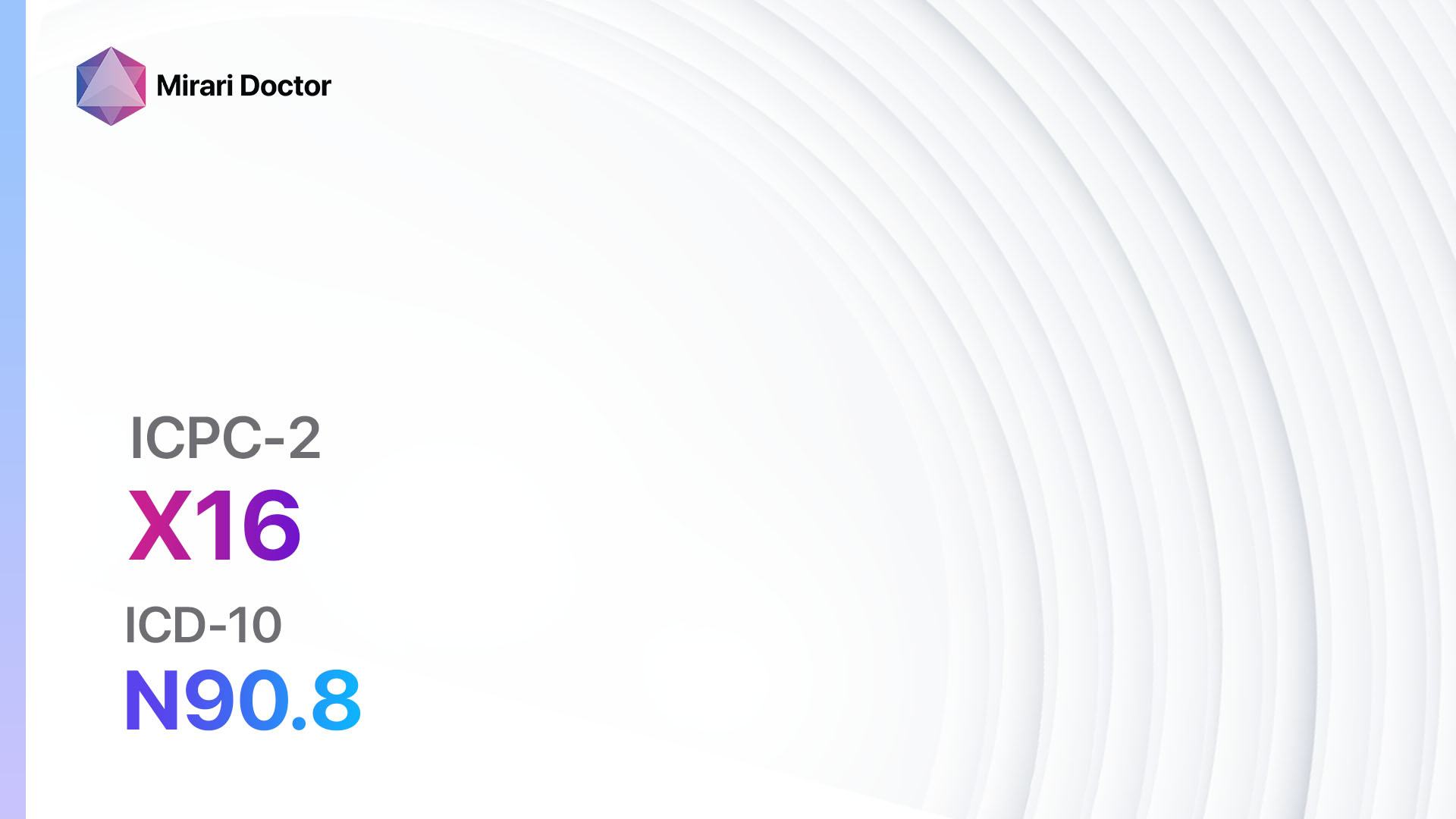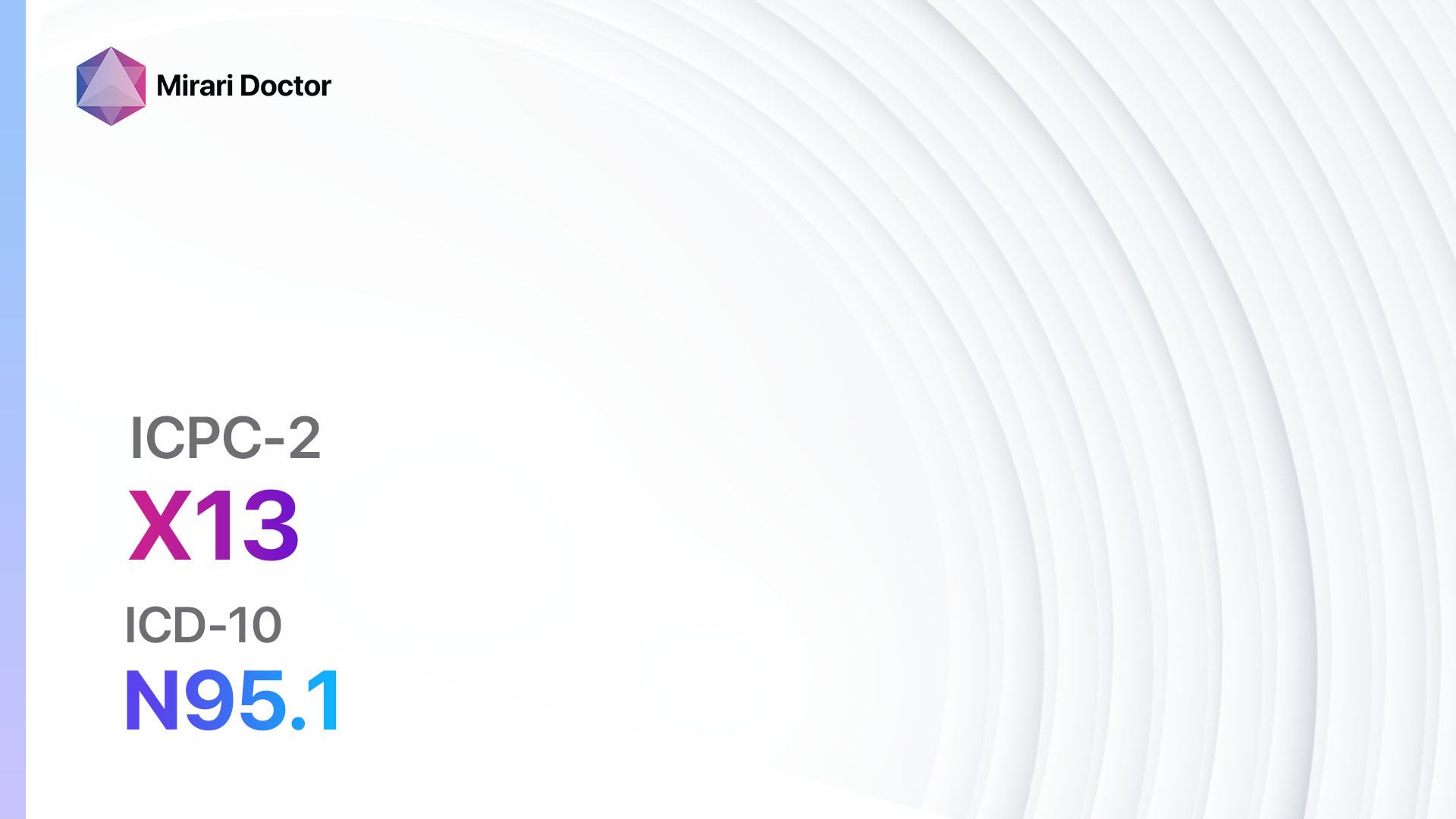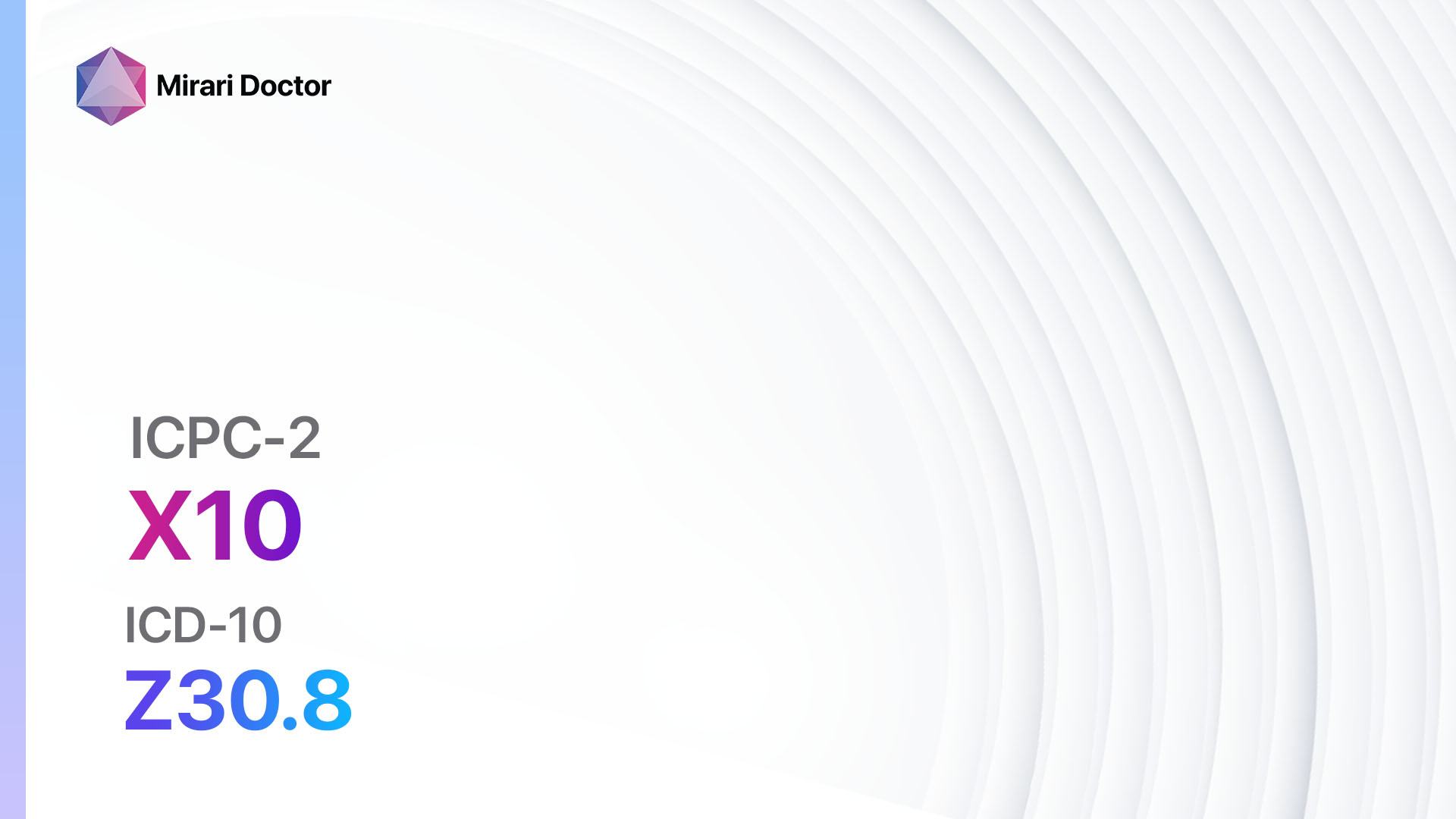
Introduction
Syphilis is a sexually transmitted infection caused by the bacterium Treponema pallidum[1]. It can affect both males and females and is transmitted through sexual contact[2]. Syphilis can have serious health consequences if left untreated, including damage to the heart, brain, and other organs[3]. The aim of this guide is to provide a comprehensive overview of the diagnosis and possible interventions for syphilis in females.
Codes
Symptoms
- Primary stage:
- Secondary stage:
- Latent stage:
- No symptoms present[8]
- Tertiary stage:
Causes
- Syphilis is caused by the bacterium Treponema pallidum[1].
- It is primarily transmitted through sexual contact, including vaginal, anal, and oral sex[2].
- It can also be transmitted from mother to child during pregnancy or childbirth[10].
Diagnostic Steps
Medical History
- Gather information about the patient’s sexual history, including number of partners, condom use, and any history of sexually transmitted infections.
- Assess for any risk factors for syphilis, such as unprotected sex, sex with multiple partners, or a history of syphilis infection.
- Inquire about any symptoms related to syphilis, such as painless sores, rashes, or other systemic symptoms.
Physical Examination
- Perform a thorough physical examination, including a visual inspection of the genital area for any sores or ulcers.
- Check for any rash on the trunk, limbs, or soles of the feet.
- Palpate lymph nodes for any swelling or tenderness.
Laboratory Tests
- Rapid plasma reagin (RPR) test: A blood test that detects antibodies to the bacterium Treponema pallidum. It is used to screen for syphilis.
- Treponemal tests (e.g., enzyme immunoassay, fluorescent treponemal antibody absorption test): These tests confirm the presence of Treponema pallidum antibodies and are used to confirm a positive RPR test.
- Darkfield microscopy: A microscopic examination of fluid from a syphilis sore to visualize the presence of Treponema pallidum bacteria.
- Polymerase chain reaction (PCR) test: This test detects the genetic material of Treponema pallidum and can be used to diagnose syphilis in certain situations.
Diagnostic Imaging
- No specific diagnostic imaging is typically required for the diagnosis of syphilis. However, imaging studies may be necessary if complications of syphilis are suspected, such as neurosyphilis or cardiovascular involvement.
Other Tests
- Lumbar puncture: This procedure may be performed if neurosyphilis is suspected to assess the cerebrospinal fluid for the presence of Treponema pallidum bacteria or antibodies.
Follow-up and Patient Education
- Patients diagnosed with syphilis should be educated about the importance of completing the full course of treatment to prevent complications and further transmission.
- Follow-up visits should be scheduled to monitor treatment response and ensure resolution of symptoms.
Possible Interventions
Traditional Interventions
Medications:
Top 5 drugs for syphilis in females:
- Penicillin G benzathine:
- Cost: $10-$50 per injection.
- Contraindications: Hypersensitivity to penicillin.
- Side effects: Allergic reactions, pain at the injection site.
- Severe side effects: Anaphylaxis.
- Drug interactions: None.
- Warning: Patients with a history of penicillin allergy should be desensitized before receiving treatment.
- Doxycycline:
- Cost: $10-$50 for a course of treatment.
- Contraindications: Pregnancy, children under 8 years old.
- Side effects: Nausea, vomiting, photosensitivity.
- Severe side effects: Severe allergic reactions, liver toxicity.
- Drug interactions: Antacids, iron supplements, oral contraceptives.
- Warning: Not recommended for pregnant women or children.
- Ceftriaxone:
- Cost: $10-$50 per injection.
- Contraindications: Hypersensitivity to cephalosporins.
- Side effects: Diarrhea, nausea, rash.
- Severe side effects: Severe allergic reactions, liver toxicity.
- Drug interactions: None.
- Warning: None.
- Azithromycin:
- Cost: $10-$50 for a course of treatment.
- Contraindications: Hypersensitivity to macrolide antibiotics.
- Side effects: Nausea, diarrhea, abdominal pain.
- Severe side effects: Severe allergic reactions, liver toxicity.
- Drug interactions: None.
- Warning: None.
- Tetracycline:
- Cost: $10-$50 for a course of treatment.
- Contraindications: Pregnancy, children under 8 years old.
- Side effects: Nausea, vomiting, photosensitivity.
- Severe side effects: Severe allergic reactions, liver toxicity.
- Drug interactions: Antacids, iron supplements, oral contraceptives.
- Warning: Not recommended for pregnant women or children.
Alternative Drugs:
- Erythromycin: An alternative to penicillin for patients with a penicillin allergy.
- Cefixime: An alternative to ceftriaxone for patients unable to tolerate ceftriaxone.
- Levofloxacin: An alternative to doxycycline for patients unable to tolerate doxycycline.
- Clarithromycin: An alternative to azithromycin for patients unable to tolerate azithromycin.
- Minocycline: An alternative to tetracycline for patients unable to tolerate tetracycline.
Surgical Procedures:
- No surgical procedures are typically required for the treatment of syphilis. However, surgical intervention may be necessary for the management of complications, such as cardiovascular or neurological involvement.
Alternative Interventions
- There are no alternative interventions specifically recommended for the treatment of syphilis. However, complementary therapies may be used to support overall health and well-being during treatment.
- Examples of alternative interventions include:
- Acupuncture: May help with symptom management and overall well-being. Cost: $60-$120 per session.
- Herbal supplements: Some herbs, such as echinacea and goldenseal, may have immune-boosting properties. Cost: Varies depending on the specific supplement.
- Probiotics: May help support gut health and overall immune function. Cost: Varies depending on the specific product.
- Stress reduction techniques: Practices such as meditation, yoga, and deep breathing exercises may help reduce stress and support overall health. Cost: Varies depending on the specific practice.
Lifestyle Interventions
- Abstaining from sexual activity during treatment and until syphilis is cured.
- Using barrier methods of contraception, such as condoms, to reduce the risk of transmission.
- Avoiding alcohol and drug use, as these substances can impair judgment and increase the risk of engaging in risky sexual behaviors.
- Maintaining a healthy lifestyle, including regular exercise, a balanced diet, and adequate sleep.
- Seeking support from healthcare professionals or support groups to address any emotional or psychological challenges associated with the diagnosis and treatment of syphilis.
It is important to note that the cost ranges provided are approximate and may vary depending on the location and availability of the interventions.
Mirari Cold Plasma Alternative Intervention
Understanding Mirari Cold Plasma
- Safe and Non-Invasive Treatment: Mirari Cold Plasma is a safe and non-invasive treatment option for various skin conditions. It does not require incisions, minimizing the risk of scarring, bleeding, or tissue damage.
- Efficient Extraction of Foreign Bodies: Mirari Cold Plasma facilitates the removal of foreign bodies from the skin by degrading and dissociating organic matter, allowing easier access and extraction.
- Pain Reduction and Comfort: Mirari Cold Plasma has a local analgesic effect, providing pain relief during the treatment, making it more comfortable for the patient.
- Reduced Risk of Infection: Mirari Cold Plasma has antimicrobial properties, effectively killing bacteria and reducing the risk of infection.
- Accelerated Healing and Minimal Scarring: Mirari Cold Plasma stimulates wound healing and tissue regeneration, reducing healing time and minimizing the formation of scars.
Mirari Cold Plasma Prescription
Video instructions for using Mirari Cold Plasma Device – X70 Syphilis female (ICD-10:A53.9)
| Mild | Moderate | Severe |
| Mode setting: 1 (Infection) Location: 0 (Localized) Morning: 15 minutes, Evening: 15 minutes | Mode setting: 1 (Infection) Location: 0 (Localized) Morning: 30 minutes, Lunch: 30 minutes, Evening: 30 minutes | Mode setting: 1 (Infection) Location: 0 (Localized) Morning: 30 minutes, Lunch: 30 minutes, Evening: 30 minutes |
| Mode setting: 3 (Antiviral Therapy) Location: 0 (Localized) Morning: 15 minutes, Evening: 15 minutes | Mode setting: 3 (Antiviral Therapy) Location: 0 (Localized) Morning: 30 minutes, Lunch: 30 minutes, Evening: 30 minutes | Mode setting: 3 (Antiviral Therapy) Location: 0 (Localized) Morning: 30 minutes, Lunch: 30 minutes, Evening: 30 minutes |
| Mode setting: 3 (Antiviral Therapy) Location: 0 (Localized) Morning: 15 minutes, Evening: 15 minutes | Mode setting: 3 (Antiviral Therapy) Location: 0 (Localized) Morning: 30 minutes, Lunch: 30 minutes, Evening: 30 minutes | Mode setting: 3 (Antiviral Therapy) Location: 0 (Localized) Morning: 30 minutes, Lunch: 30 minutes, Evening: 30 minutes |
| Mode setting: 7 (Immunotherapy) Location:1 (Sacrum) Morning: 15 minutes, Evening: 15 minutes | Mode setting: 7 (Immunotherapy) Location:1 (Sacrum) Morning: 30 minutes, Lunch: 30 minutes, Evening: 30 minutes | Mode setting: 7 (Immunotherapy) Location:1 (Sacrum) Morning: 30 minutes, Lunch: 30 minutes, Evening: 30 minutes |
| Total Morning: 60 minutes approx. $10 USD, Evening: 60 minutes approx. $10 USD | Total Morning: 120 minutes approx. $20 USD, Lunch: 120 minutes approx. $20 USD, Evening: 120 minutes approx. $20 USD, | Total Morning: 120 minutes approx. $20 USD, Lunch: 120 minutes approx. $20 USD, Evening: 120 minutes approx. $20 USD, |
| Usual treatment for 7-60 days approx. $140 USD – $1200 USD | Usual treatment for 6-8 weeks approx. $2,520USD – $3,360 USD | Usual treatment for 3-6 months approx. $5,400 USD – $10,800 USD |
 |
|
Use the Mirari Cold Plasma device to treat Syphilis female effectively.
WARNING: MIRARI COLD PLASMA IS DESIGNED FOR THE HUMAN BODY WITHOUT ANY ARTIFICIAL OR THIRD PARTY PRODUCTS. USE OF OTHER PRODUCTS IN COMBINATION WITH MIRARI COLD PLASMA MAY CAUSE UNPREDICTABLE EFFECTS, HARM OR INJURY. PLEASE CONSULT A MEDICAL PROFESSIONAL BEFORE COMBINING ANY OTHER PRODUCTS WITH USE OF MIRARI.
Step 1: Cleanse the Skin
- Start by cleaning the affected area of the skin with a gentle cleanser or mild soap and water. Gently pat the area dry with a clean towel.
Step 2: Prepare the Mirari Cold Plasma device
- Ensure that the Mirari Cold Plasma device is fully charged or has fresh batteries as per the manufacturer’s instructions. Make sure the device is clean and in good working condition.
- Switch on the Mirari device using the power button or by following the specific instructions provided with the device.
- Some Mirari devices may have adjustable settings for intensity or treatment duration. Follow the manufacturer’s instructions to select the appropriate settings based on your needs and the recommended guidelines.
Step 3: Apply the Device
- Place the Mirari device in direct contact with the affected area of the skin. Gently glide or hold the device over the skin surface, ensuring even coverage of the area experiencing.
- Slowly move the Mirari device in a circular motion or follow a specific pattern as indicated in the user manual. This helps ensure thorough treatment coverage.
Step 4: Monitor and Assess:
- Keep track of your progress and evaluate the effectiveness of the Mirari device in managing your Syphilis female. If you have any concerns or notice any adverse reactions, consult with your health care professional.
Note
This guide is for informational purposes only and should not replace the advice of a medical professional. Always consult with your healthcare provider or a qualified medical professional for personal advice, diagnosis, or treatment. Do not solely rely on the information presented here for decisions about your health. Use of this information is at your own risk. The authors of this guide, nor any associated entities or platforms, are not responsible for any potential adverse effects or outcomes based on the content.
Mirari Cold Plasma System Disclaimer
- Purpose: The Mirari Cold Plasma System is a Class 2 medical device designed for use by trained healthcare professionals. It is registered for use in Thailand and Vietnam. It is not intended for use outside of these locations.
- Informational Use: The content and information provided with the device are for educational and informational purposes only. They are not a substitute for professional medical advice or care.
- Variable Outcomes: While the device is approved for specific uses, individual outcomes can differ. We do not assert or guarantee specific medical outcomes.
- Consultation: Prior to utilizing the device or making decisions based on its content, it is essential to consult with a Certified Mirari Tele-Therapist and your medical healthcare provider regarding specific protocols.
- Liability: By using this device, users are acknowledging and accepting all potential risks. Neither the manufacturer nor the distributor will be held accountable for any adverse reactions, injuries, or damages stemming from its use.
- Geographical Availability: This device has received approval for designated purposes by the Thai and Vietnam FDA. As of now, outside of Thailand and Vietnam, the Mirari Cold Plasma System is not available for purchase or use.
References
- Peeling RW, Mabey D, Kamb ML, Chen XS, Radolf JD, Benzaken AS. Syphilis. Nat Rev Dis Primers. 2017 Oct 12;3:17073. doi: 10.1038/nrdp.2017.73. PMID: 29022569.
- Hook EW 3rd. Syphilis. Lancet. 2017 Apr 15;389(10078):1550-1557. doi: 10.1016/S0140-6736(16)32411-4. Epub 2016 Dec 18. PMID: 27993382.
- Stamm LV. Syphilis: Re-emergence of an old foe. Microb Cell. 2016 Sep 5;3(9):363-370. doi: 10.15698/mic2016.09.523. PMID: 28357375; PMCID: PMC5354564.
- World Organization of Family Doctors (WONCA). International Classification of Primary Care, Second edition (ICPC-2). Oxford: Oxford University Press; 1998.
- World Health Organization. International Statistical Classification of Diseases and Related Health Problems (11th ed.); 2019. Available from://icd.who.int/browse11/l-m/en
- Forrestel AK, Kovarik CL, Katz KA. Sexually acquired syphilis: Historical aspects, microbiology, epidemiology, and clinical manifestations. J Am Acad Dermatol. 2020 Jan;82(1):1-14. doi: 10.1016/j.jaad.2019.02.073. Epub 2019 Mar 6. PMID: 30844426.
- Sparling PF, Swartz MN, Musher DM, Healy BP. Clinical manifestations of syphilis. In: Holmes KK, Sparling PF, Stamm WE, et al., eds. Sexually Transmitted Diseases. 4th ed. New York: McGraw-Hill; 2008:661-684.
- Clement ME, Okeke NL, Hicks CB. Treatment of syphilis: a systematic review. JAMA. 2014 Nov 12;312(18):1905-17. doi: 10.1001/jama.2014.13259. PMID: 25387188; PMCID: PMC6690208.
- Bhai S, Lyons JL. Neurosyphilis Update: Atypical is the New Typical. Curr Infect Dis Rep. 2015 May;17(5):481. doi: 10.1007/s11908-015-0481-x. PMID: 25896751.
- Gomez GB, Kamb ML, Newman LM, Mark J, Broutet N, Hawkes SJ. Untreated maternal syphilis and adverse outcomes of pregnancy: a systematic review and meta-analysis. Bull World Health Organ. 2013 Mar 1;91(3):217-26. doi: 10.2471/BLT.12.107623. Epub 2013 Jan 16. PMID: 23476094; PMCID: PMC3590617.
Related articles
Made in USA













